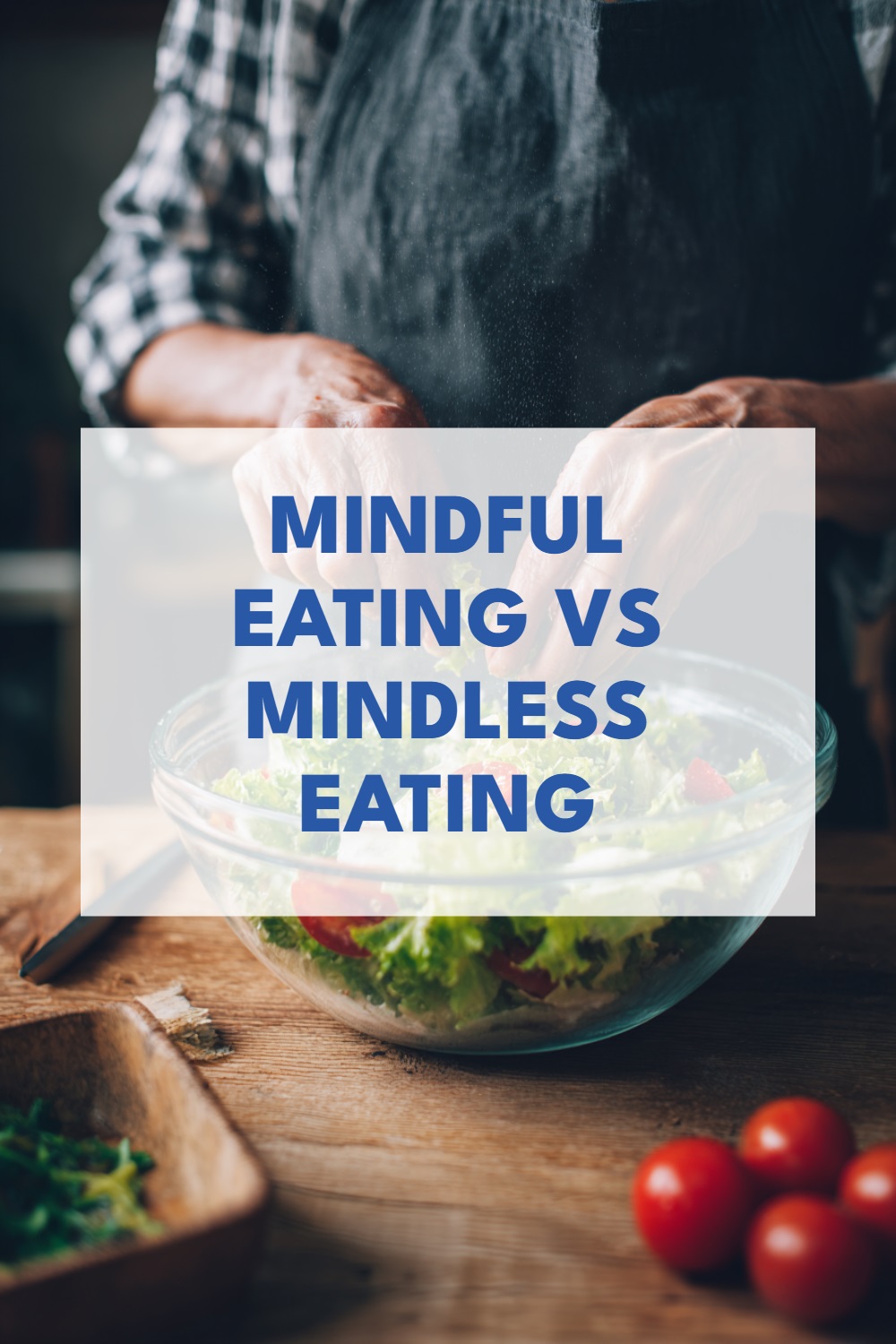Most people don’t realize how much of their eating happens on autopilot.
You’re not really tasting the food. You’re distracted, rushing, multitasking, or just trying to get through the day.
And it’s not your fault. We live in a world that encourages speed and convenience. Slowing down feels unnatural.
But over time, this kind of disconnected eating leads to problems. You overeat. You don’t feel satisfied. You eat when you’re not even hungry. And then you wonder why food feels so frustrating.
This is the difference between mindless eating and mindful eating.
And once you see it, you can start making small shifts that make a real impact.
What Mindless Eating Looks Like
Mindless eating is when you eat without paying attention. It’s not about being careless. It’s just the default for a lot of people.
Here are a few common examples:
- Eating while scrolling your phone or watching TV
- Snacking out of a bag without noticing how much is gone
- Picking at food in the kitchen while cooking or cleaning
- Finishing your plate even if you’re full, just because it’s there
- Eating because it’s a certain time, not because you’re hungry
It’s automatic. Unconscious. Habitual.
And when you do it often, it’s easy to lose touch with what your body actually needs.
What Mindful Eating Looks Like
Mindful eating is the opposite. It’s about paying attention while you eat.
That doesn’t mean you have to eat in silence or chew every bite 30 times. You don’t need to light candles or turn meals into a ritual.
It just means being present enough to notice:
- Am I hungry right now?
- What does this food actually taste like?
- How do I feel while I’m eating?
- Am I full yet, or still hungry?
That’s it. Awareness, not perfection.
Why the Difference Matters
When you eat mindlessly, you disconnect from your body’s signals. You eat past fullness without realizing it. Or you eat when you’re not hungry just because food is around.
You also tend to enjoy the food less. Because you’re not really in the experience.
And afterward, you might feel guilty or frustrated – not because of what you ate, but because of how you ate it.
Mindful eating changes that.
When you’re present, you tend to eat the right amount without tracking anything. You enjoy food more. You feel more in control.
Not because you’re forcing yourself to be “good,” but because you’re actually listening to your body.

Common Moments of Mindless Eating
You don’t need to overhaul your entire eating routine to improve this. Just start noticing the patterns where mindless eating tends to show up.
Some common ones:
- Snacking while working or watching TV
- Eating in the car, especially fast food or drive-thru snacks
- Late-night grazing when you’re tired or stressed
- Picking at leftovers while cleaning the kitchen
- Eating out of boredom, not hunger
These aren’t emergencies. They’re just habits.
And habits can be changed once you’re aware of them.
How to Shift Toward Mindful Eating (Without a Big Routine)
You don’t need to track, meditate, or journal to eat more mindfully. Start with one or two of these:
1. Pause before you eat.
Even a few seconds is enough. Ask yourself, “Am I actually hungry?” This one moment of awareness can change the whole experience.
2. Eat the first few bites without distraction.
You don’t have to sit in silence the whole meal. Just notice the first bites. How does it taste? How hungry are you? How satisfying is it?
3. Use a plate.
Even for snacks. Eating from a container or bag makes it easier to lose track of how much you’re eating. A plate creates a clear stopping point.
4. Check in halfway through the meal.
Ask, “Do I need more, or is this enough?” It’s a simple question that puts you back in the driver’s seat.
5. Notice how you feel after eating.
This isn’t about judgment. It’s about connection. Did that food energize you, satisfy you, or make you feel sluggish? The more you notice, the more naturally your choices improve.
Mindful Eating Isn’t All-or-Nothing
You don’t need to eat mindfully 100% of the time.
You will eat on the go. You will snack distracted sometimes. That’s normal life.
But even 10% more awareness can make a big difference. It helps you feel more steady, more in tune, and less reactive.
You don’t need to control everything. You just need to notice more often.
Final Thoughts
Mindless eating is common. It’s not something to feel bad about. It just means you’ve been doing what most people do – eat on autopilot.
But it doesn’t have to stay that way.
Mindful eating isn’t a big lifestyle shift. It’s a series of small, doable moments. Pausing. Tuning in. Noticing.
Over time, those moments add up. They help you eat in a way that feels better – more satisfying, more consistent, and more grounded.
And the best part? You can start with your next bite.

